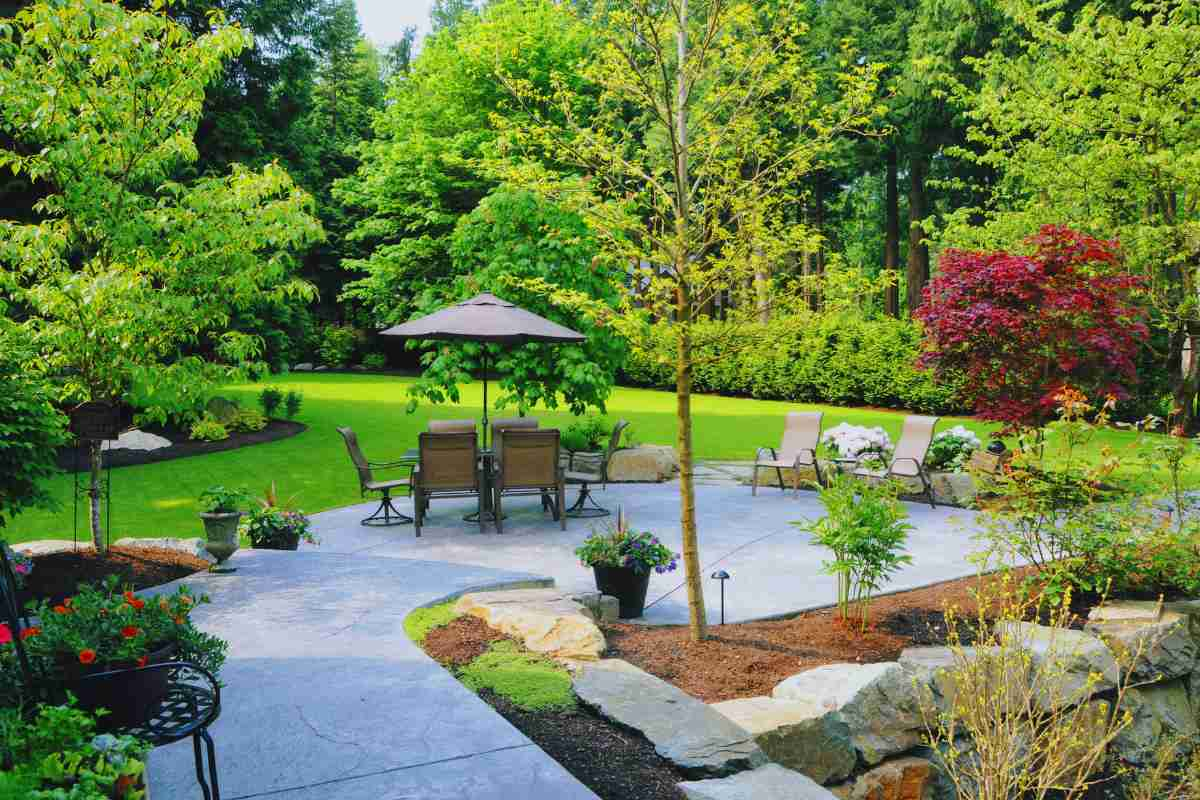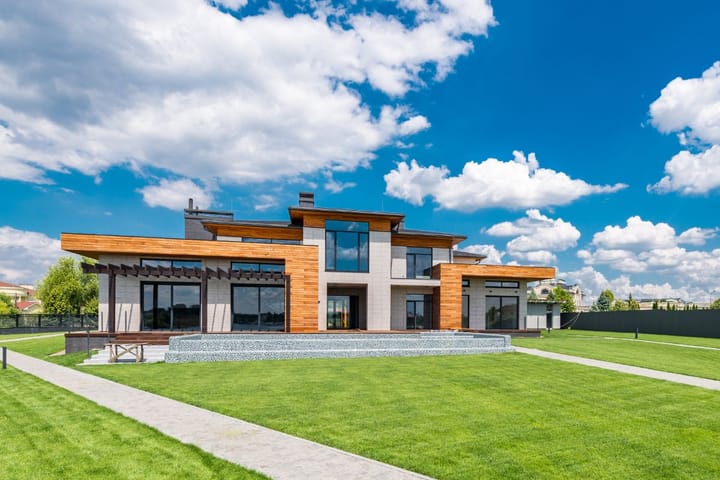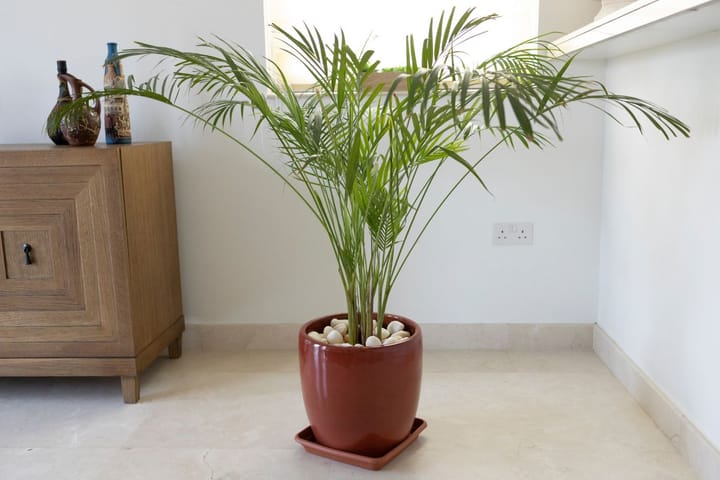Landscaping for Remote Workers - Reclaiming the Outdoors as a Work Space
WFH boosts wellness & saves commute time, offering comfort & flexibility. Here's how to create a great outdoor WFH space at home.

A few decades ago, working from home would have been extremely difficult, nigh impossible.
Even as technology like the Internet, computers, and mobile phones became more widespread and commonplace in the early 2000s, without tools to facilitate easy communication and shared documents, working from home was still a far-off reality.
With the advance of technology though, nowadays, working from home is increasingly being adopted by companies.
With work-from-home (WFH) arrangements, employees can do away with the time wasted travelling back and forth from work and work in the comfort of their homes.
This saves them that hour or two that would have been wasted on travelling, which they can then spend on more meaningful activities like exercising, family time, or even just catching up on valuable sleep.
Furthermore, employees can work in the comfort of their home, wearing whatever they want, blasting music if they like, or just working in their favorite spot. These all help boost mental wellness and productivity.
Of course, this can also backfire, as there can be more distractions at home, which can end up reducing focus and productivity.
Nevertheless, in general, employees tend to benefit from greater mental wellness, productivity, and more time for meaningful activities when they’re allowed to work from home.
With that said, here’s why the outdoors can be a great place to work from home, and how to landscape your space to create a conducive work environment outdoors.
Why Work From Home Outdoors?
First off, let’s clarify something.
We’re not talking about setting up a canopy or pavilion outdoors and just putting a table and a chair there.
No, we’re referring to setting up a proper garden office, complete with large windows, insulation, electricity, and a temperature control system.
Or at the very least, if you’re working at your patio or under a gazebo, there should be electricity, WIFI connection, and a comfortable chair and desk.
Either way, working outdoors should be comfortable. Otherwise, there wouldn’t be a point, no matter what benefits there are.
So why work outdoors instead of indoors?
Well, for one, you’re likely going to get more sunlight than indoors, unless your room or wherever you’re working from is located in an area that gets lots of sunlight throughout the day.
Natural light brings lots of benefits. These include helping you feel more mentally alert, simulating vitamin D production, and regulating your circadian rhythm so that you sleep better at night.
On top of that, when you work outdoors, you’re surrounded by greenery, which is immensely beneficial for your mental health.
There’s a reason why parks are such popular spots for relaxing and taking walks.
Studies have shown that greenery reduces your mental fatigue and restores your focus and attention, boosting your productivity. This can be very helpful for when you’re brainstorming or performing more focus-intensive tasks.
Spending time in nature has also been proven to lower cortisol, the stress hormone. A mere 20 minutes outdoors can significantly reduce your stress levels and help you relax.
And finally, plants purify air, which means you’re breathing healthier, and often cooler and more refreshing oxygen. This increases your alertness and can help stave off the sluggishness that comes from being indoors all day.
And lastly, there are a lot less distractions outdoors. There won’t be easy access to the kitchen, sounds from your family member watching TV, your pets disturbing you, and all the other small random distractions that are inevitable in a home.
In short, working outdoors can significantly improve your mental wellness and productivity—as long as you’ve properly set up your outdoor work office.
Alright, so now that we’ve established that you need a work office, we won’t be going over how to set it up. That’s going to be pretty straightforward—WIFI, a comfortable desk and chair, proper shade, and temperature control.
Instead, let’s focus on how to landscape its surroundings and make sure your garden office’s design complements your landscape.
1. Cooling Microclimates
Keeping your air conditioning on throughout the day is very energy-intensive, and you’ll quickly rack up a hefty utility bill.
Even discounting the heat, the glare from the sun can strain your eyes and make it hard to get any work done.
That’s where landscaping comes in. With thoughtful landscaping, you’ll be shaded from the sun and have a relatively cooling private space even on the hottest days.
The goal is to create an area in your landscape that will be shaded and will stay cool throughout the day. This way, you won’t have to rely on your temperature control systems as much, and you’ll also be shielded from the glaring UV rays.
For the sides that need shade, i.e. the sides with windows, all you need is a living wall or a shade structure like a trellis that can also support plants.
This way, not only will you be shaded, but the plants will further cool the surrounding air through transpiration and also purify the air.
If you prefer more natural structures, you can also use tall trees or living hedges.
You can even take it one step further and install a pergola. A pergola covers not just the sides, but the top too.
Even though your office should already be covered at the top, by draping plants around your pergola, including at the top, you'll have yourself an even cooler microclimate.
This way, you can rely even less on your temperature control systems.
By incorporating microclimates, you'll enjoy a cooler space, fresher air, and reduced energy costs.
2. Seamless Integration
When you're designing your outdoor office, ideally, make sure that it fits seamlessly and looks as much a part of your surroundings as any other feature.
To be fair, even if it was just a sleek standalone structure, it would still look just fine. It would basically look just like a separate section of your house, kind of like a pool house.
However, with the right materials and design, your outdoor office becomes not just another structure, but a beautiful addition that adds another layer to your landscape or perhaps even serving as a centerpiece.
There are many ways to do this, but the main points to keep in mind are to use natural or sustainable materials, and to ensure there are paths leading to it so that it looks intentionally a part of your landscape.
For example, you could have a crushed granite path that leads to a cedar office, with wildflowers surrounding it.
Basically, ask yourself how you can make your outdoor office feel like it’s supposed to be there.
3. Sun Mapping
Lastly, landscapers can help you find the best place to position your office so that it remains as cool as possible, by plotting the position of the sun and its intensity throughout the day.
For example, depending on your region, a certain direction in your yard may get sun all day, another may get more harsher sunlight in the afternoon, and another may just not get too much sunlight throughout the day.
Typically, the least sunlight will be coming from the north.
However, you shouldn’t just go ahead and position your office so that the side with the most larger openings face the north.
Remember, we’re trying to find the best position, which may not always mean the one with the least sunlight, because certain cooler, wetter climates may already have dimmer sunlight than other climates.
This means that if you face the north and get even lesser sunlight, your office may end up being too dim and you won’t be able to fully reap the benefits of daylight.
It’s not always the case that the north side will get the least sunlight either.
Most of the time, that’s going to be true, but there are exceptions, which is why you need professionals to plot the sun’s patterns and then decide which is the best side to face to get the optimal amount of light for your office.
Do You Need To Hire A Landscaper For This Project?
Yes, chances are, you’re going to need to hire a landscaper who knows what they’re doing, like Louisville Landscape Pros.
Your garden office is either going to be a room by itself or some kind of deck or patio.
Either way, it’s going to be a large feature that will require site grading, structural support, and foundational work—all tasks that the average person would probably struggle to complete due to a lack of both equipment and knowledge.
Plus, engaging a trained professional is safer, and with their experience and expertise, they’d likely do a much better job of making your office a seamless part of your landscape.



Comments ()